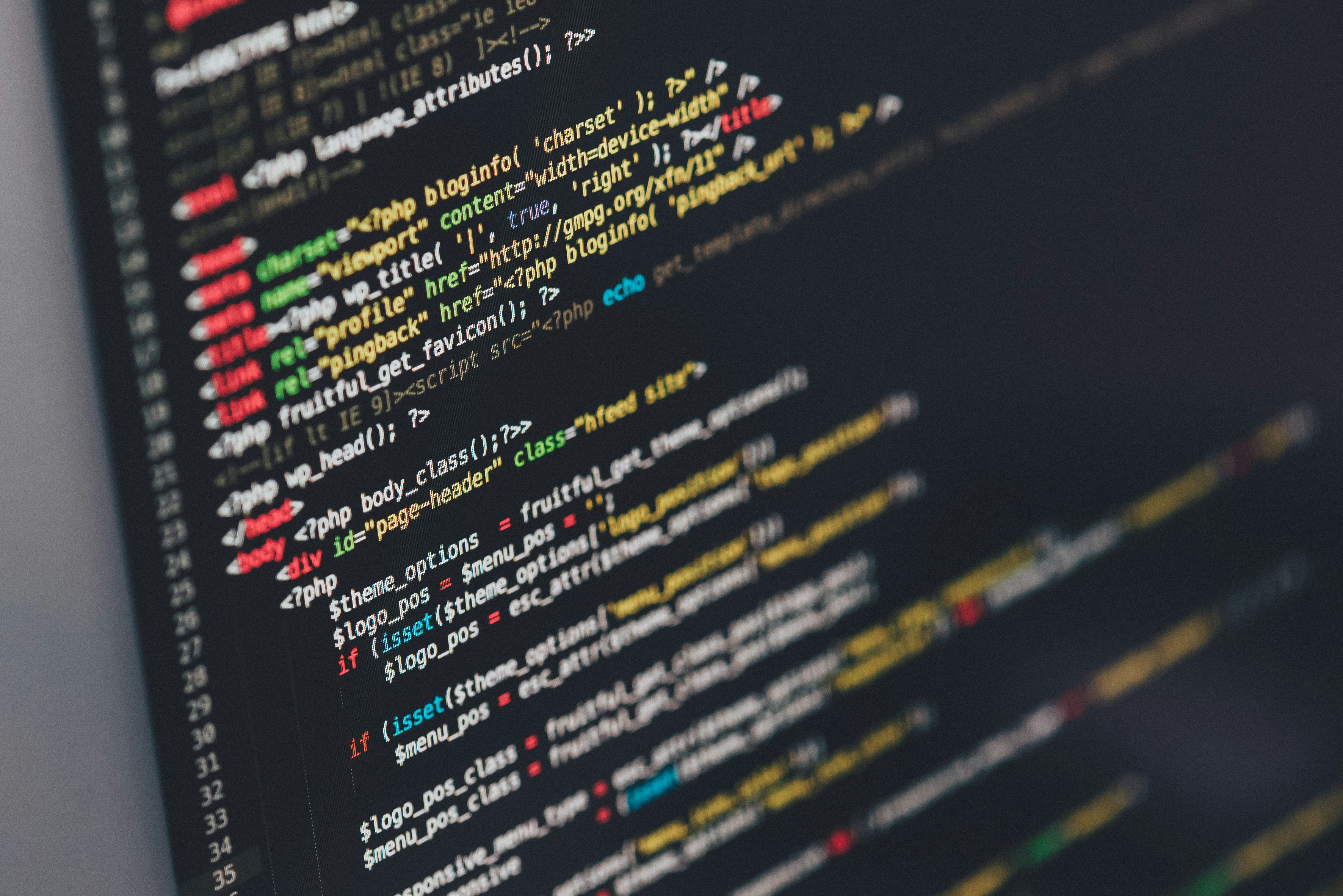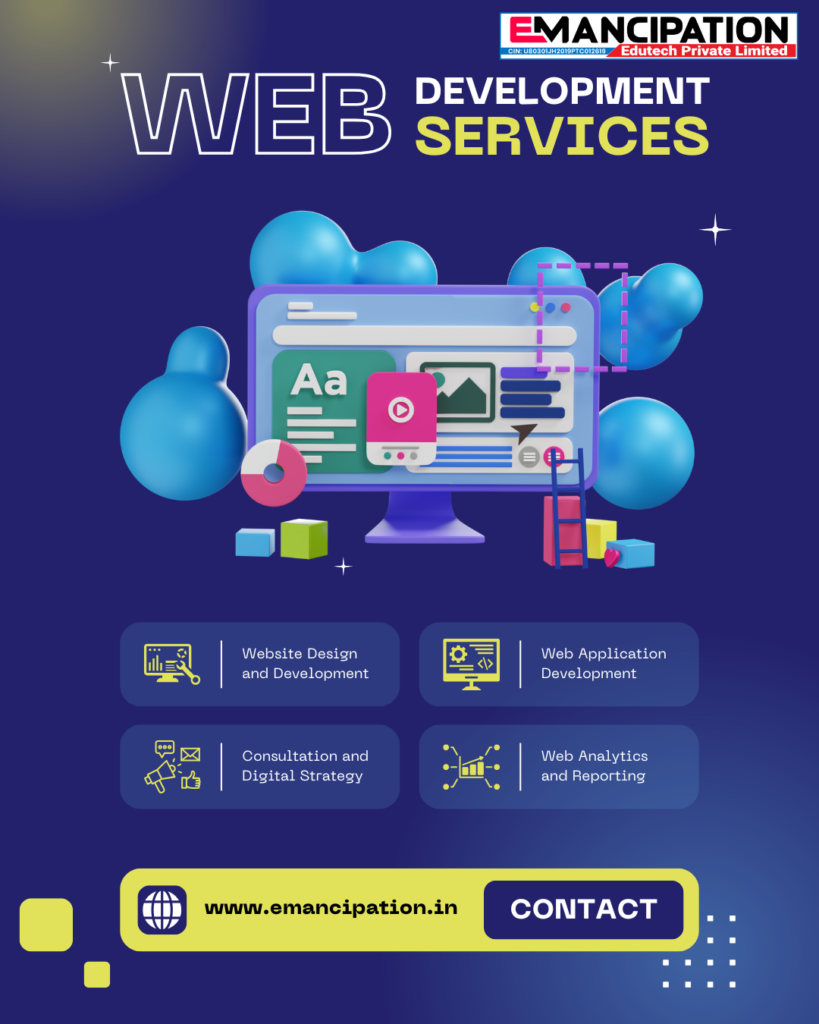Introduction to Full Stack Web Development
Full stack web development is a comprehensive approach to building web applications that encompasses both front-end and back-end development. Front-end development focuses on the user interface and experience, dealing with everything that users interact with directly in their web browsers. This includes the visual design, layout, and behavior of the application. Technologies such as HTML, CSS, and JavaScript are commonly employed in this domain, where the goal is to create a responsive, attractive, and functional interface.
On the other hand, back-end development involves server-side programming, databases, and application logic. It is responsible for managing data exchange between the server and the user, ensuring security, and maintaining overall system integrity. Languages such as PHP and Java are frequently utilized in back-end development, each offering unique features and advantages that cater to different project requirements. Understanding the difference between web development using PHP and Java full stack web development is crucial for developers and project managers alike, as it significantly affects the architecture of the application and the tools at their disposal.
The technology stack selected for full stack web development plays a vital role in determining the efficiency and performance of a web application. Different languages and frameworks come with their own sets of libraries, tools, and best practices, which can either enhance or hinder the development process. A thoughtful selection is essential for optimizing the workflow and ensuring that the application meets user needs effectively. Thus, comprehending the balance and interplay between front-end and back-end technologies is critical for anyone involved in web development, making it imperative to analyze options such as PHP and Java when embarking on new projects.
Understanding PHP: A Popular Choice for Web Development
PHP, or Hypertext Preprocessor, is a widely-used open-source scripting language that has been instrumental in shaping the landscape of web development. Initially created by Rasmus Lerdorf in 1993, PHP has evolved considerably over the years. Its primary purpose is to enable server-side scripting, allowing developers to create dynamic and interactive web pages. The language’s simplicity and effectiveness in handling various web tasks have made it a preferred choice among numerous developers across the globe.
The popularity of PHP can be attributed to several key factors. One of the most notable aspects is its ease of use, which makes it accessible for both beginners and seasoned programmers. New developers often find PHP intuitive, allowing them to quickly grasp the fundamentals of web development. Moreover, the extensive documentation and active community support significantly contribute to the language’s adoption. Developers can easily find tutorials, forums, and resources to help them troubleshoot issues or expand their skillset.
Another compelling reason behind PHP’s enduring popularity is its ability to integrate seamlessly with various databases, such as MySQL and PostgreSQL. This database connectivity allows developers to create robust web applications that can store, retrieve, and manipulate data efficiently. Additionally, PHP supports a wide range of frameworks, like Laravel and Symfony, which further enhance its capabilities and streamline the development process.
In modern web applications, PHP is often used for content management systems (CMS) like WordPress, which powers a significant portion of websites on the internet. Its versatility is evident in various use cases, ranging from e-commerce platforms to social networking sites. As developers continue to explore the difference between web development using PHP and Java full stack web development, it becomes clear that PHP remains a vital tool in the web development toolkit.
Exploring Java: A Robust Language for Full Stack Development
Java is widely recognized as a powerful programming language that plays a significant role in the realm of full stack web development. Its design emphasizes object-oriented principles, which not only facilitate code reusability and modularity but also enhance maintainability. This aspect makes Java particularly appealing for developers undertaking large-scale and complex enterprise solutions.
One of the standout features of Java is its performance efficiency. The language is designed to be fast and responsive, owing to its Just-In-Time (JIT) compilation and efficient garbage collection mechanisms. These characteristics allow Java applications to execute quickly and manage memory efficiently, which is crucial in web development, particularly when handling numerous requests or transactions simultaneously.
Security is another critical component where Java excels. With built-in protection mechanisms and robust security protocols, Java provides developers with tools to safeguard applications against potential threats. This feature is particularly beneficial for enterprise applications, where data integrity and security are paramount. Java’s security manager and bytecode verification contribute to creating a reliable environment to execute various web solutions.
In the context of full stack development, several frameworks enhance Java’s functionality significantly. Frameworks like Spring and Hibernate offer comprehensive tools that simplify and accelerate development processes. Spring provides a robust platform for developing web applications through its extensive ecosystem, while Hibernate streamlines database interactions, making it easier for developers to manage persistence. These frameworks not only increase productivity but also ensure that Java remains a competitive choice in the discussion of the difference between web development using PHP and Java full stack web development.
Ultimately, Java stands as a formidable option for those engaging in full stack web development, offering a blend of performance, security, and extensive frameworks that contribute to the language’s enduring popularity in the field.
Comparison of PHP and Java: Performance and Scalability
The performance of a programming language is often a decisive factor in determining its suitability for web development. When analyzing the difference between web development using PHP and Java full stack web development, one must consider execution speed and resource management. PHP is widely recognized for its rapid execution, especially in scenarios involving smaller applications or sites where server response time is critical. Its interpreted nature allows for quick deployments and adjustments, making it popular among developers for dynamic website creation. However, PHP’s performance may diminish as the application scales, particularly in high-traffic environments, where its single-threaded nature can lead to bottlenecks.
On the other hand, Java is generally regarded as a more robust choice for large-scale applications. With its ability to run in multithreaded environments, Java can effectively manage concurrent user requests, which makes it advantageous for applications expecting significant growth in user traffic. The Just-In-Time (JIT) compiler further enhances Java’s performance by compiling code to native machine language at runtime, which can improve speed for long-running processes. Additionally, Java’s performance can be optimized through various frameworks, such as Spring, which provide extensive resources for efficient data handling and application scaling.
In practical terms, real-world benchmarks indicate that Java applications may handle more users simultaneously compared to PHP applications, particularly under heavy load. However, the choice may ultimately depend on the specific requirements of the project. PHP excels in scenarios where rapid development and iteration is crucial—such as simple web applications—and its ecosystem is vast, catering to a wide range of needs. Conversely, Java shines in enterprise-level applications requiring high levels of scalability and performance. Understanding these differences is key for developers when deciding between PHP and Java for their full stack web development projects.
Development Environment: Tools and Frameworks
When comparing the development environments for PHP and Java full stack web development, it is essential to consider the frameworks and tools utilized by developers. For PHP, two of the most popular frameworks are Laravel and Symfony. Laravel is renowned for its elegant syntax and provides a range of features designed to streamline common tasks, such as routing, authentication, and caching. Symfony, on the other hand, is highly modular and allows developers to pick and choose components according to their project needs, making it a flexible option for those seeking robust web applications.
In terms of Integrated Development Environments (IDEs), PHP developers often prefer tools like PhpStorm and Visual Studio Code. PhpStorm is specifically tailored for PHP development, offering powerful debugging and testing capabilities. Visual Studio Code, while a general-purpose editor, has robust support for PHP through extensions, making it a versatile choice for developers. These tools facilitate a smooth development process and enhance productivity.
For Java full stack web development, popular frameworks include Spring and JavaServer Faces (JSF). Spring is characterized by its comprehensive programming model, which makes it suitable for building fully-fledged web applications. Its emphasis on dependency injection allows for more manageable code and specialized configurations, making it a favorite among enterprise-level developers. Conversely, JSF is primarily used to build user interfaces for web applications, providing a component-based architecture that helps streamline UI development.
Java developers also frequently utilize IDEs like IntelliJ IDEA and Eclipse. IntelliJ IDEA offers advanced code completion and on-the-fly code analysis, significantly boosting the productivity of developers working on complex applications. Eclipse, while being older, remains popular due to its open-source nature and extensive plugin offerings, catering specifically to Java development. Overall, the choice of tools and frameworks in both PHP and Java full stack web development fundamentally affects the development experience and the resulting application capabilities.
Learning Curve: Which Language is Easier to Master?
When comparing the learning curves of PHP and Java in full stack web development, a number of factors come into play, including documentation quality, resource availability, and community support. PHP is often praised for its simplicity and accessibility, especially for beginners. The syntax is straightforward, making it easier for new developers to grasp fundamental programming concepts. Additionally, PHP’s vast amount of online tutorials and resources, including forums, videos, and documentation, serve as a boon for those just starting their programming journey. This accessibility can significantly shorten the time it takes for newcomers to gain proficiency in PHP.
On the other hand, Java offers a more complex programming environment that includes a steeper learning curve. While Java’s principles are foundational to many programming paradigms, such as object-oriented programming, they can be more challenging for beginners to grasp. The language’s rigorous structure, including type-checking and error handling, demands a strong understanding of programming fundamentals before one can effectively code applications. However, once this foundational knowledge is solidified, Java’s robustness and versatility can prove to be advantageous for developers aiming for a deeper understanding of software development.
Documentation for Java is extensive, covering a wide array of topics and offering thorough explanations. The Java community is expansive, providing ample support through various forums, professional networks, and coding boot camps. While both languages offer excellent resources for learners, PHP tends to have a slight edge in terms of beginner-friendly content. Nonetheless, as learners progress, those who choose Java often find themselves with a deeper comprehension of programming concepts due to the language’s complexities.
In conclusion, the difference between web development using PHP and Java full stack web development can significantly impact the learning journey. While PHP is generally easier for beginners to master, Java fosters a comprehensive understanding of programming principles that can benefit developers in the long run.
Use Cases: Ideal Scenarios for PHP and Java
When evaluating the difference between web development using PHP and Java full stack web development, it is essential to consider the types of projects each language is most suited for. PHP excels in scenarios that require rapid development and dynamic website capabilities, making it an ideal choice for small to medium-sized projects. Websites that benefit from content management systems (CMS) such as WordPress, Joomla, and Drupal often leverage PHP due to its ease of integration and vast library of resources. For instance, a small business needing an online presence could quickly establish a site using PHP, taking advantage of various templates and plugins available within these platforms.
On the other hand, Java is recognized for its robustness and scalability, making it a superior choice for complex web applications and enterprise-level solutions. Technologies such as Spring and JavaServer Faces are commonly utilized in full stack Java development, supporting sophisticated backend operations and extensive data processing capabilities. An example would be a large e-commerce platform that requires handling thousands of simultaneous transactions while maintaining high performance and security. Java’s concurrency features and strong typing help mitigate risks associated with larger datasets and multi-threaded operations.
Additionally, when contemplating the difference between web development using PHP and Java, it’s important to acknowledge specific use cases where each language shines. For example, PHP is often preferred for developing RESTful APIs and lightweight applications due to its straightforward nature. Conversely, businesses requiring extensive integration with existing systems may lean towards Java for its cross-platform capabilities and robust security features. Each language has its unique strengths tailored to meet the demands of different project types, thus influencing the selection process based on project requirements.
Cost Implications: Development and Maintenance Expenses
When considering the choice between PHP and Java for full stack web development, it is essential to evaluate the cost implications associated with both languages. These costs can be divided into several key categories, including hiring developers, hosting options, and ongoing maintenance. Understanding these factors can help businesses budget effectively for their projects.
The hiring of developers is one of the most significant cost factors when engaging in web development projects. Typically, PHP developers are more widely available and tend to demand lower salaries compared to Java developers. This discrepancy in salary can be attributed to PHP’s longstanding position as a predominant language for web development, thereby producing a larger pool of available talent. In contrast, Java developers, while generally more costly, often bring extensive experience in enterprise-level applications and are sought after for their skills in large-scale projects.
Hosting options also play a critical role in the cost structure. PHP applications can often be hosted on shared hosting environments, which are relatively inexpensive and accessible for small to medium-sized projects. This affordability makes PHP an attractive choice for startups and small businesses. Conversely, Java applications typically require more robust hosting solutions, such as dedicated servers or cloud-based systems, which can lead to significantly higher costs. These expenses can accumulate over time, affecting the overall budget of a web development project.
Lastly, ongoing maintenance costs must be factored into the equation. Both PHP and Java applications will require periodic updates and maintenance, but their complexities can differ significantly. Generally, Java applications might demand more rigorous updates due to their complexity, potentially leading to increased long-term expenses. PHP, being less complex in many use cases, may result in lower maintenance fees over time. Therefore, understanding the difference between web development using PHP and Java full stack web development can aid in making informed financial decisions for both initial and ongoing project costs.
Conclusion: Making the Right Choice for Your Project
When it comes to deciding between PHP and Java for full stack web development, it is essential to consider several key factors that can influence the success of your project. Each technology offers its distinct advantages and challenges, making the decision largely contingent upon your specific requirements and context. One crucial aspect to evaluate is the nature of your project. PHP is often favored for its simplicity and is widely used for building dynamic websites, whereas Java’s robust, object-oriented framework can be beneficial for enterprise-level applications that require scalability and performance.
Additionally, the skills of your development team play a significant role in this decision-making process. If your team is more proficient in PHP, leveraging their expertise can lead to faster implementation and fewer errors. Conversely, a team well-versed in Java may be better equipped to tackle complex applications that require high levels of security and maintainability. It’s important to acknowledge that both technologies have vibrant ecosystems, offering frameworks and libraries that can support different types of applications. The choice should align with the available resources and competencies within your organization.
Lastly, future scalability should be a focal point in your decision-making matrix. As your project evolves, you may need to accommodate increasing user demands, which could necessitate a more comprehensive technology stack. Java, with its strong emphasis on performance and scalability, may be preferred for projects anticipating significant growth. Conversely, if your project aims for quicker iterations and iterative development, PHP could be more suitable due to its rapid deployment capabilities.
In conclusion, choosing the right technology for full stack web development requires a careful assessment of your project needs, team skills, and future scalability. Whether you opt for PHP or Java, making an informed decision tailored to your unique circumstances will set the foundation for your project’s success.




